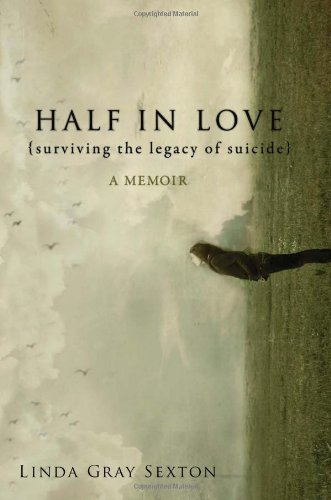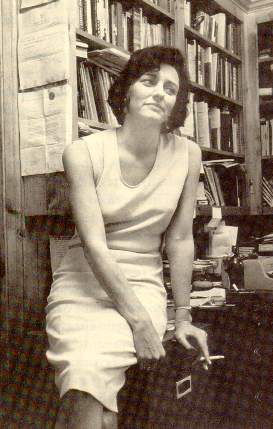 Synopsis:
Synopsis:
At a very young age, author Linda Gray Sexton became her mother’s protector and guardian, entering into a relationship she would later describe as both codependent and symbiotic. The oldest of Pulitzer Prize-winning poet Ann Sexton’s two daughters, Linda took on the role of caregiver in response to her mother’s ongoing struggles with alcoholism, depression, anxiety, and manic episodes that led to multiple suicide attempts and resultant hospitalizations. While Linda’s younger sister, Joy, largely survived by avoiding the drama playing out in the Sexton household, Linda became immersed in it. And suffered the consequences.
Her parent’s marriage was tempestuous, marked by bouts of drinking and violent arguments which, in the 1960’s, remained, like Ann’s mental disabilities, a topic not broached in the Sexton household. Eventually, the Sextons divorced and in October 1974, at the age of 45, Ann Sexton went into the garage of their home in an affluent Boston suburb and kiled herself “in her bright red Mercury Cougar,” just three months after Linda celebrated her twenty-first birthday. A senior at Harvard College, Linda had been selected by her mother to serve as her literary executor, a huge responsibility which would keep her close to her mother’s legacy and contribute to her attempt to evade its pull.
In the ensuing years, Linda would struggle with her guilt over feeling relieved when her mother finally succeeded in taking her own life. Bouts of depression plagued Linda even as a young girl, but as she grew into adulthood, she began to experience more pronounced and debilitating episodes. She fought her condition, determined not to allow her children to experience the same grief and pain that she had experienced as a child, promising them that they would never have to endure what she did vis a vis her own mother’s struggles.
Eventually, however, Linda was unable to stave off the feelings of despair, anxiety, and the irresistible urge to experience death in order to be relieved from her ongoing pain. After an initial attempt to end her own life, Linda’s husband left her. Sharing custody of their two sons and determined not to cause them additional pain, Linda became a “cutter” for a time — the pain of inflicting wounds with a razor actually served as a brief respite from the pain of her depression and hopelessness, hiding her behavior from everyone, including the doctor who had forced her to sign a contract stating that she would refrain from cutting herself and acknowledging that if she failed, he would refuse to continue treating her. Additional suicide attempts followed.
Eventually, Linda learned that there can be, in fact, a legacy of suicide within families. Appropriate treatment, knowledge, and the unconditional love and support of her family allowed Linda to avoid passing it on to her own children.
Review:

Darkling I listen; and for many a timeI have been half in love with easeful Death,Called him soft names in many a mused rhymeTo take him into the air my quiet breath;Now more than ever it seems rich to die,To cease upon the midnight with no pain.~ John Keats,“Ode to a Nightingale”
Even though she was determined not to follow in her mother’s troubled footsteps, Sexton found herself slipping down the proverbial rabbit hole into despair and despondency, even as she clung to her own promise to her young sons to save her. She had vowed that she would never allow them to experience the pain of seeing their mother repeatedly hospitalized for treatment, the fear of wondering whether she would survive her next attempt to take her own life, or the sense of rejection and loss that comes from knowing that a parent prefers death to remaining with you.
Half in Love is an extremely difficult read because Sexton tells her story with breathtaking honesty and candor. Her forthright descriptions of her efforts to lead a “normal” life are heart-wrenching, especially as their relate to her determination to provide a different quality of life for her sons.
I’d thought I could pick the sort of mother I would be, as simply as I might pluck events or holidays from a river of experience. I’d thought I could consciously choose the foundation on which I would build the style of my mothering. I’d thought that decisiveness and self-control were the ways we shaped our futures; if those futures were handed down from generation to generation, then to succeed at changing them was still within reach with the application of a little bit of effort. It didn’t occur to me then that there was some secret code in both learned behavior and genetic, biological expression that was embedded within us. I could not see that these two factors might actually govern what I did, and what kind of mother I would be, regardless of how I strove to aim at a particular vision of myself in this role. I began to discover, slowly, that it was not a question of pure willpower.
Sexton learned that when dealing with mental disabilities, willpower is insufficient to overcome the symptoms and sometimes devastating consequences. “[P]ure willpower” was not enough to pull her out of the abyss into which she feel so many times.” Families do, in fact, pass on many legacies, suicide being among them. Sexton naturally questioned whether it was a genetic predisposition to severe depression or her childhood experiences with her mother that repeatedly drew her to the brink. Regardless, compassionate treatment providers, appropriate medications, informed and understanding friends and family members all contribute to Sexton’s ability to refrain from perpetuating the cycle and, instead, pass a legacy of life and survival to her sons. Half in Love: Surviving the Legacy of Suicide is an important work because of the relentless, unapologetic manner in which Sexton relates her experiences. I highly recommend it to anyone who seeks a better understanding of the myriad ways in which mental disabilities impact entire families and desires to become empowered to deal with those struggling with mental disabilities with understanding, compassion, and empathy.



8 Comments
[New Post] Book Review: Half in Love https://www.jhsiess.com/2011/01/25/book-r…
Wow. That was an outstanding review. I’m a little speechless (so unlike me). You pulled great quotes and answered a question I had about where the title came from. Fantastic; thank you so much for being on the tour.
Pingback: Tweets that mention Book Review: Half in Love — Colloquium -- Topsy.com
What a great review; I especially like the emphasis on how sheer willpower (to be a better mother, to overcome certain tendencies) may not be enough.
I am now following you on Networked Blogs! Thanks for another great review (as always!).
Glad to have you at the party-
CYM
This sounds like a very intense story. I am sure it was difficult to write it and relive the tragedy of her mom’s suicide.
lkish77123 at gmail dot com
Pingback: Linda Gray Sexton, author of Half in Love: Surviving the Legacy of Suicide, on tour January/February 2011 | TLC Book Tours
Pingback: The Mad Editor’s Round-Up #27 | Diary of a Mad Editor